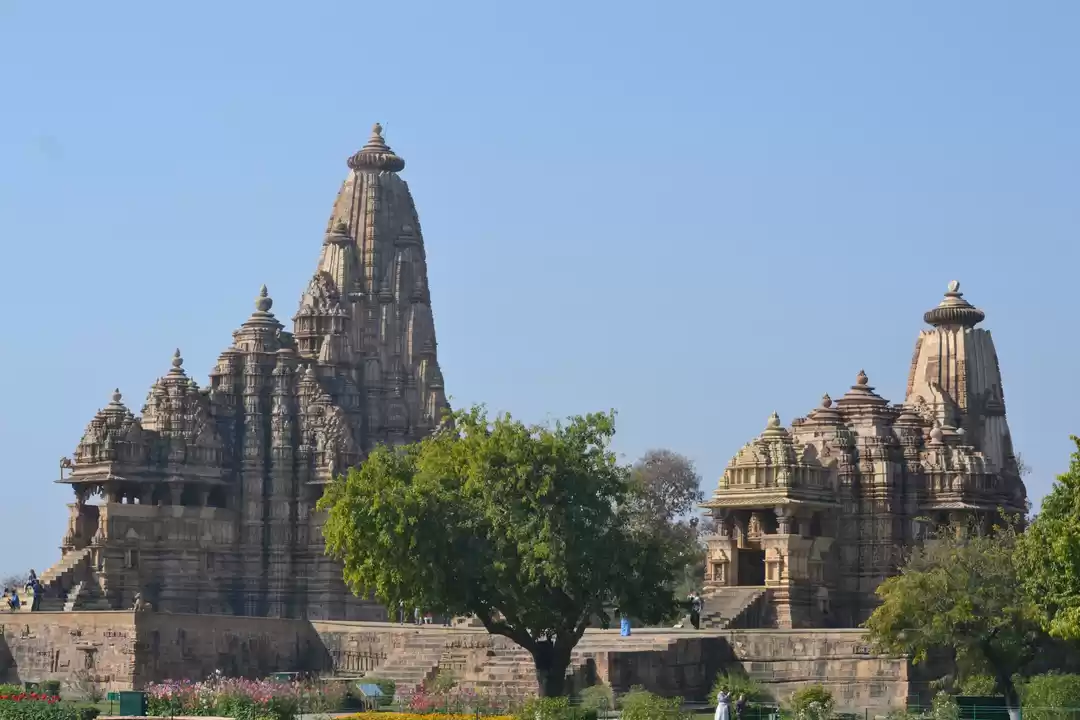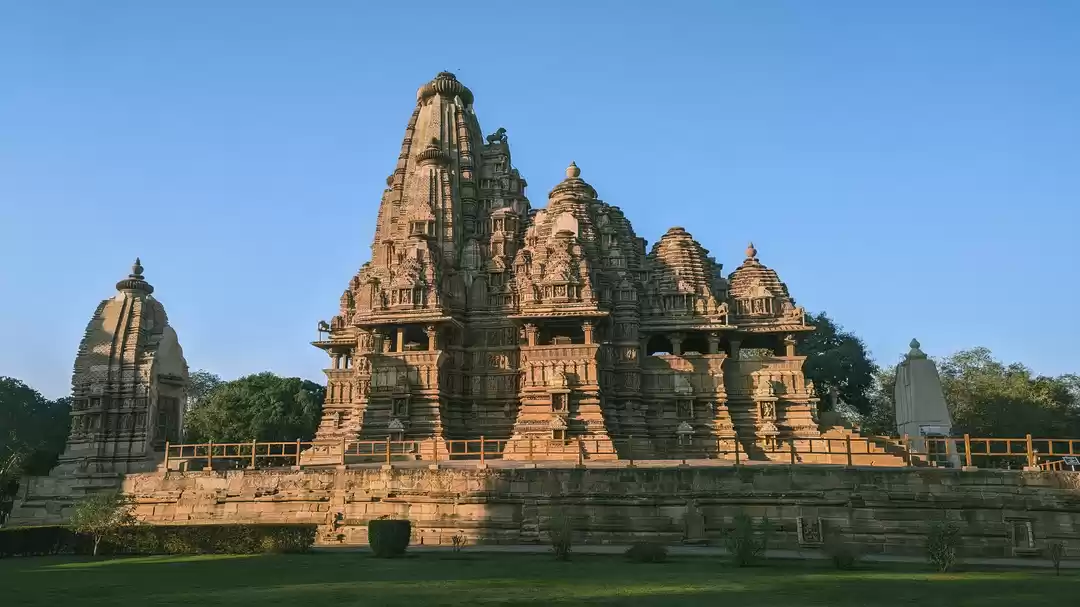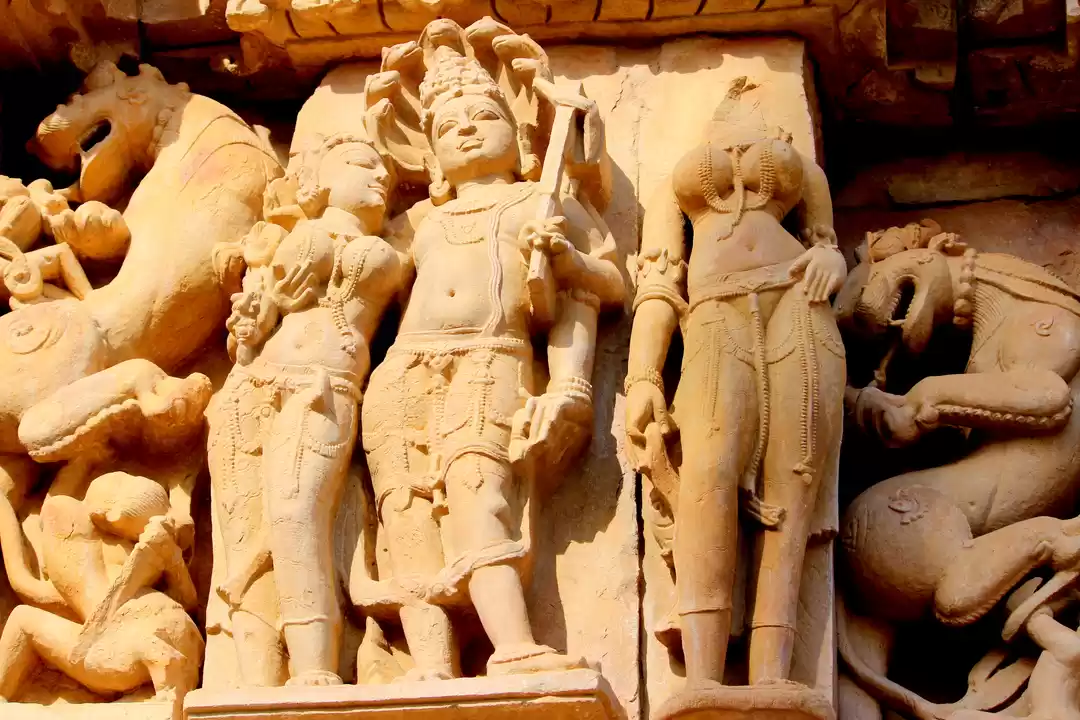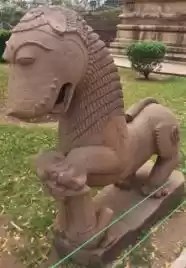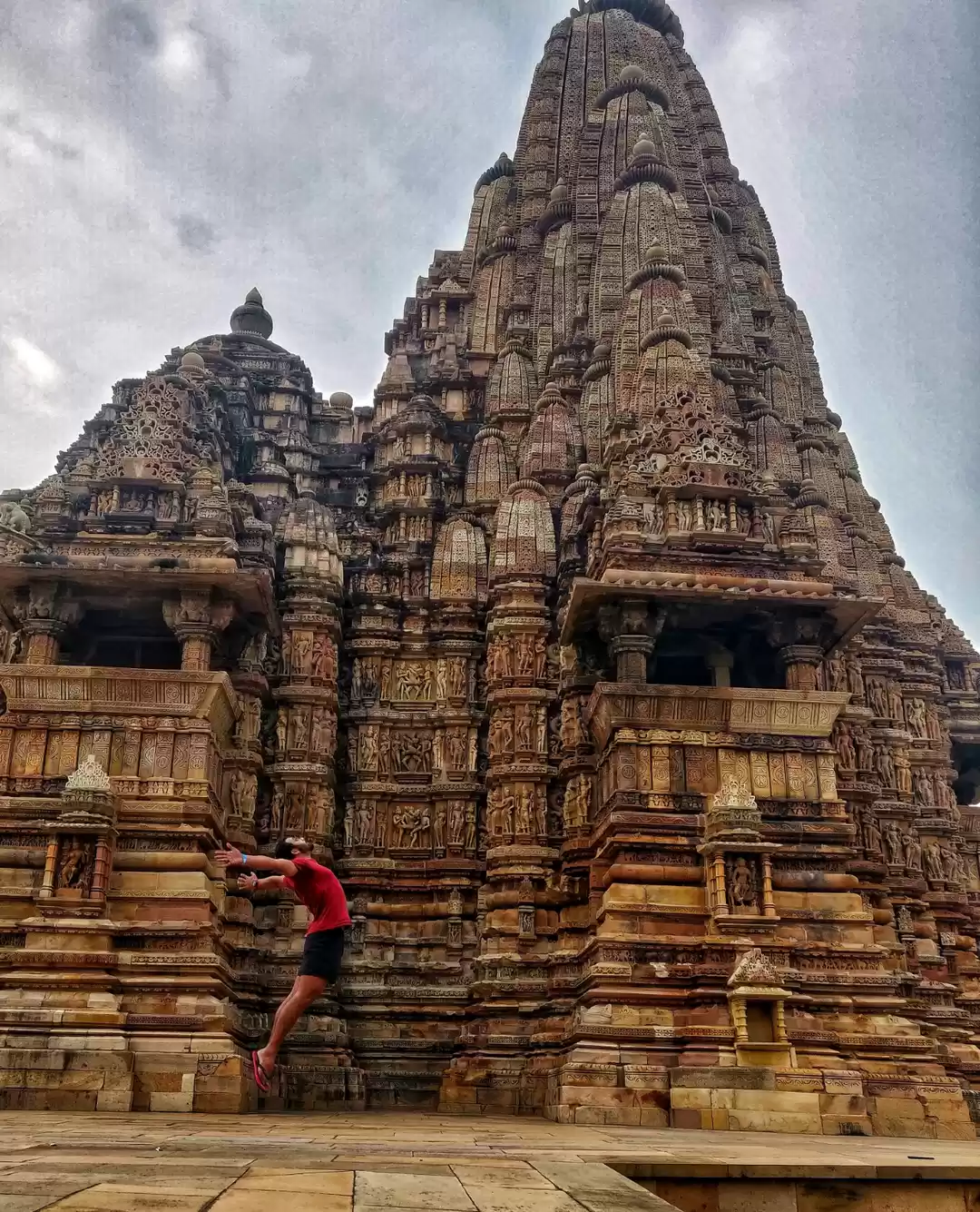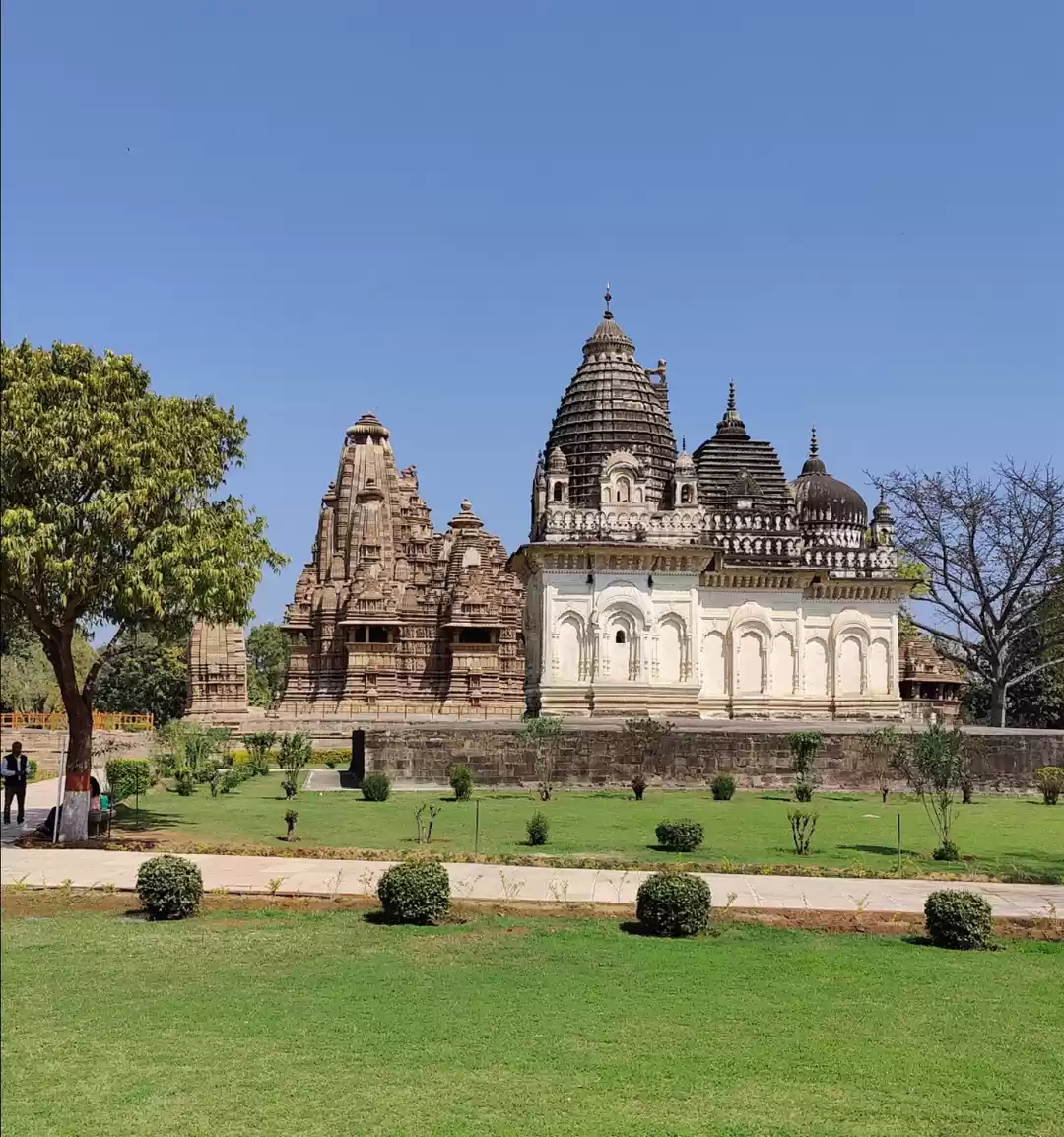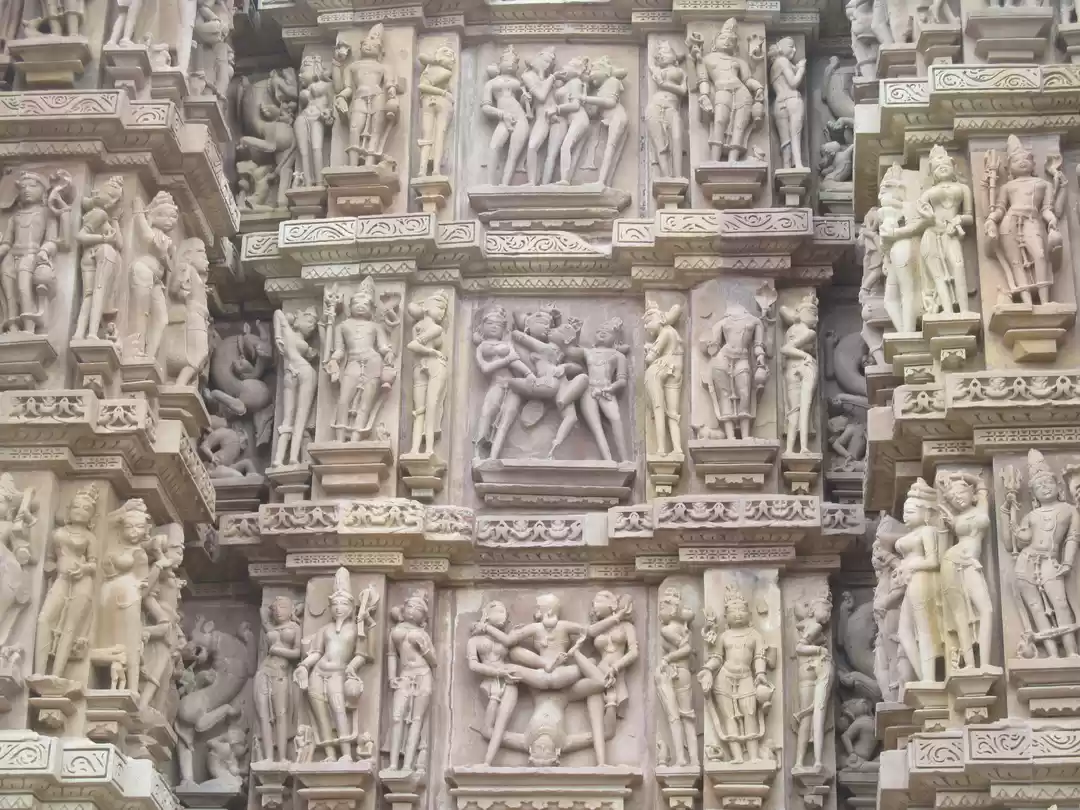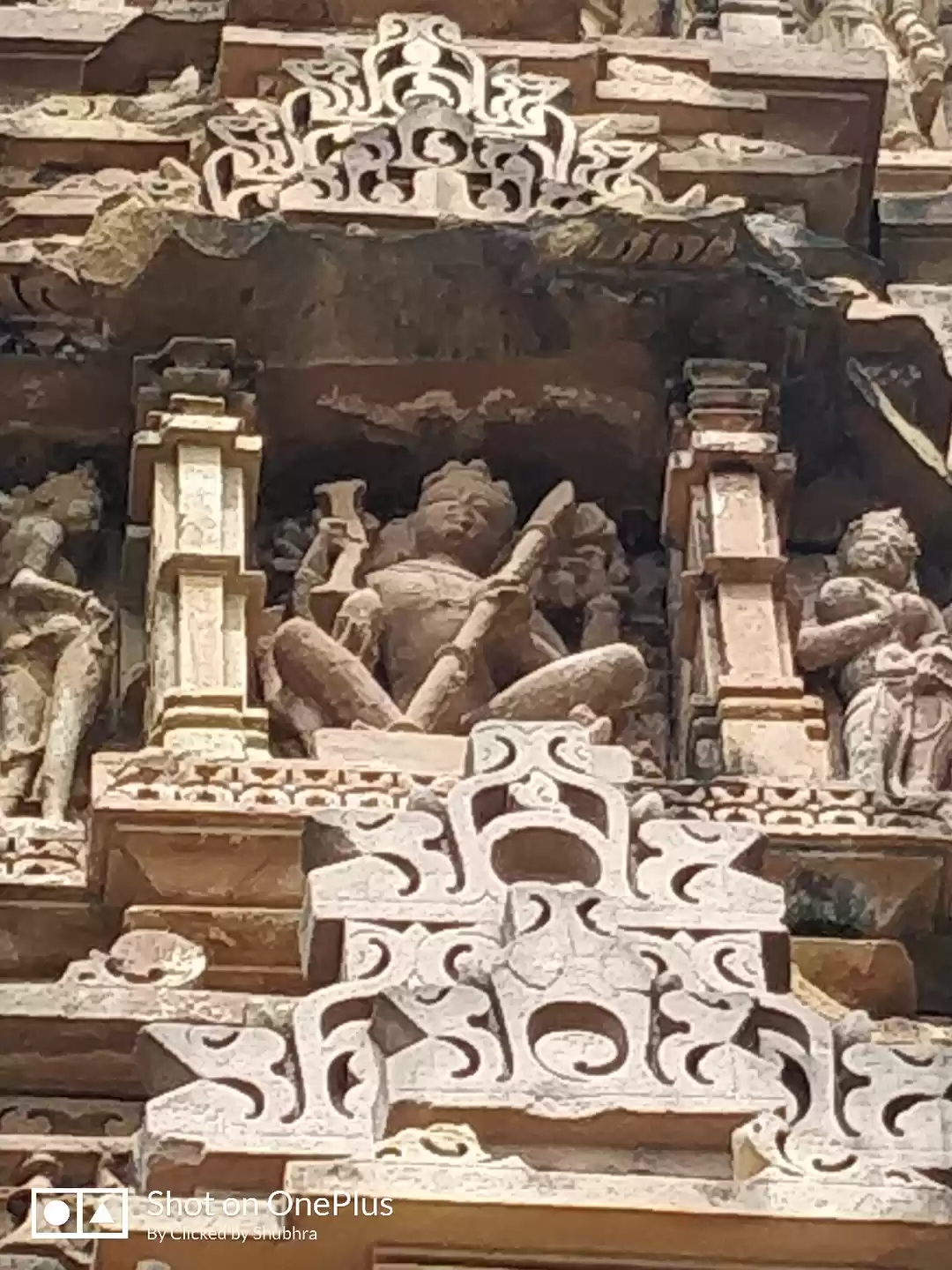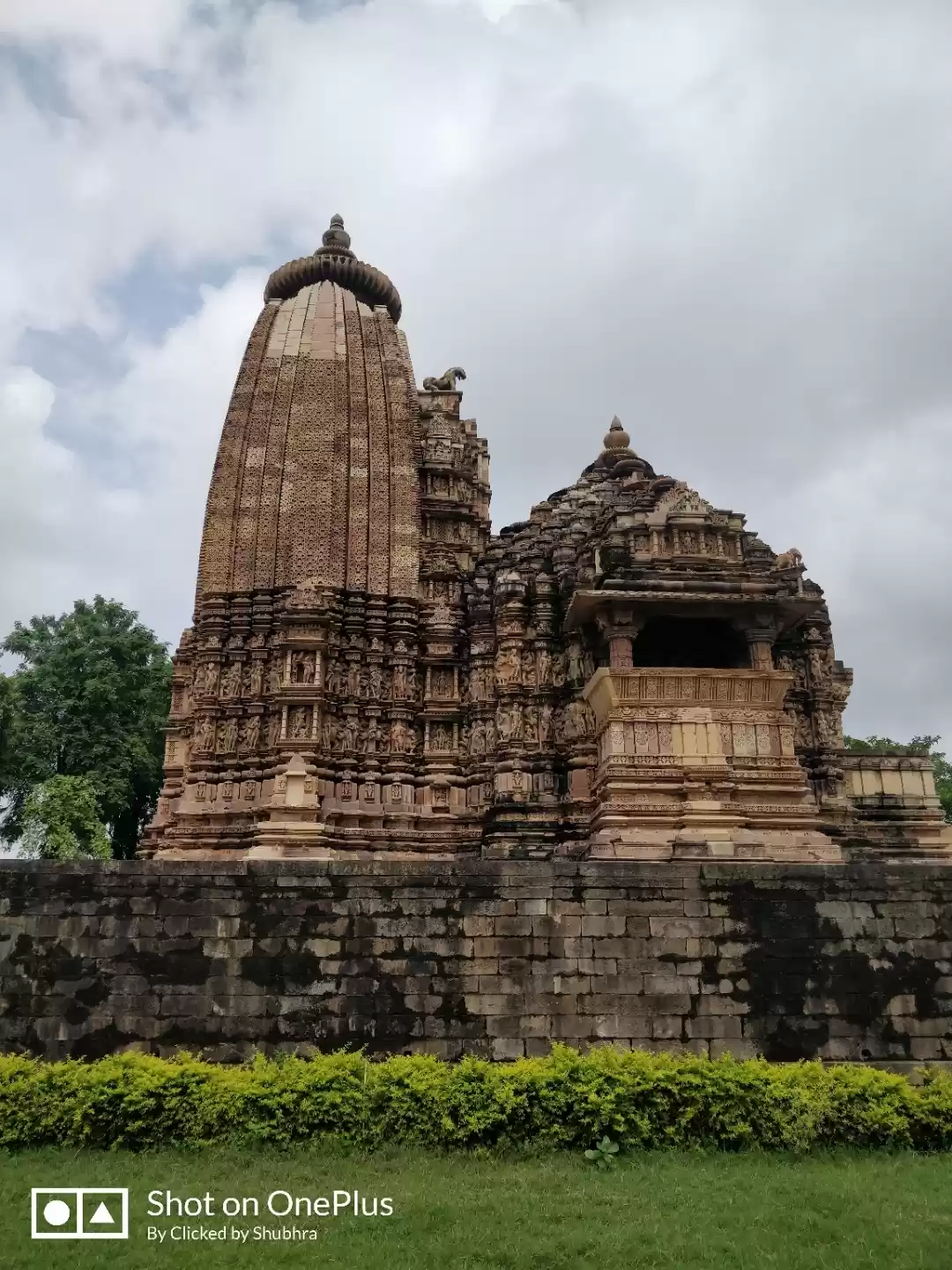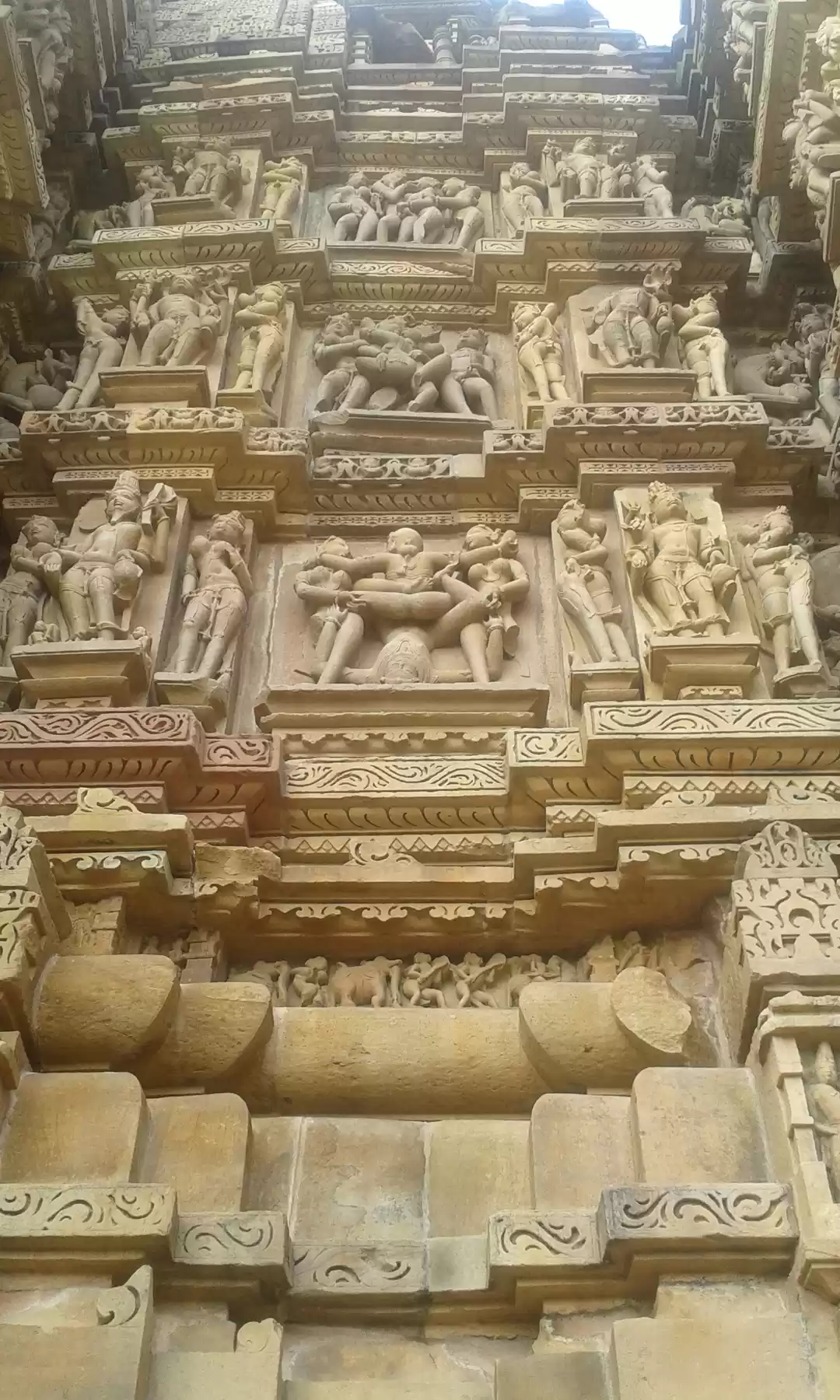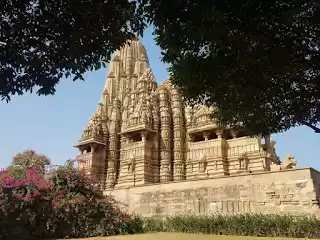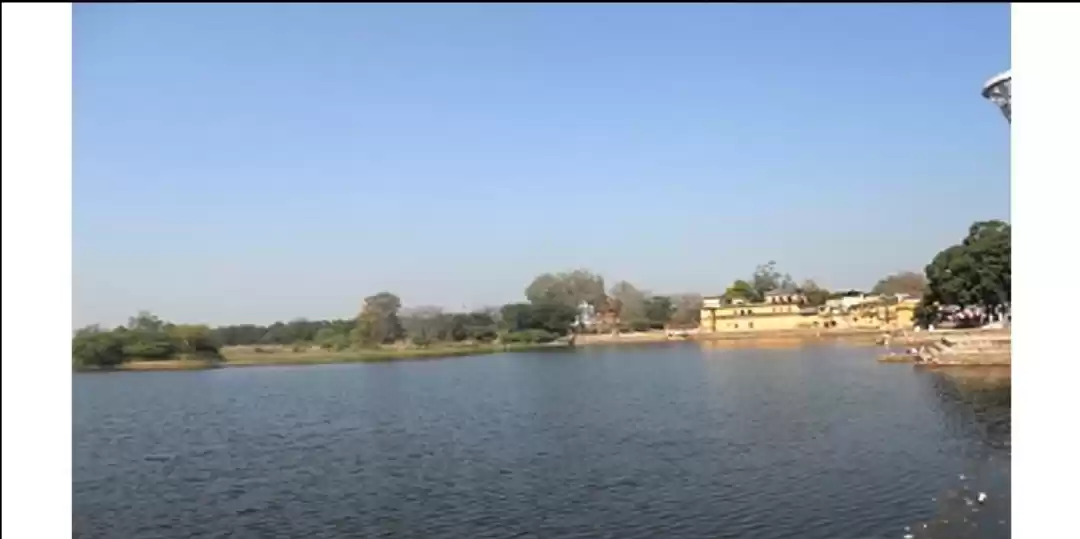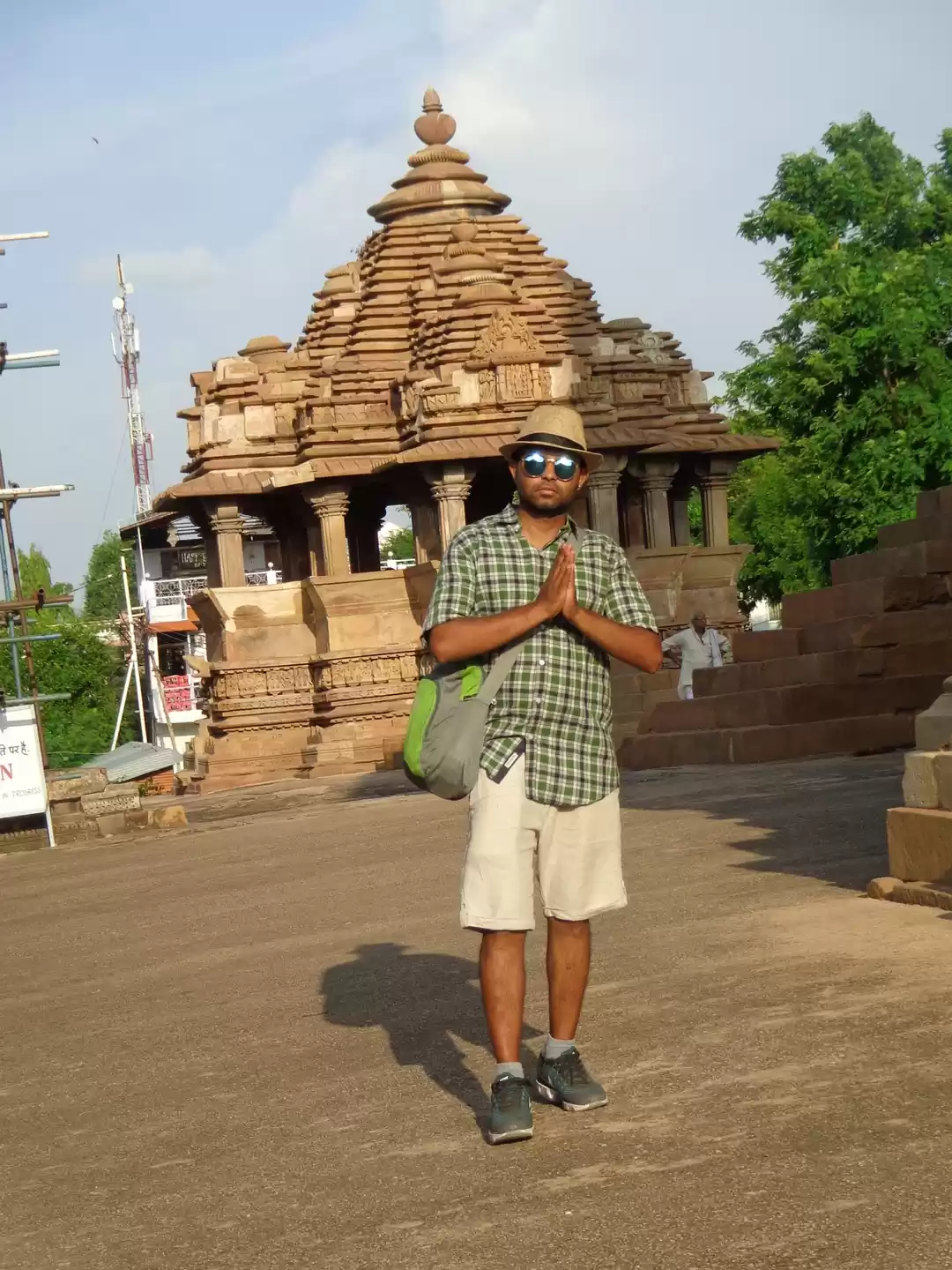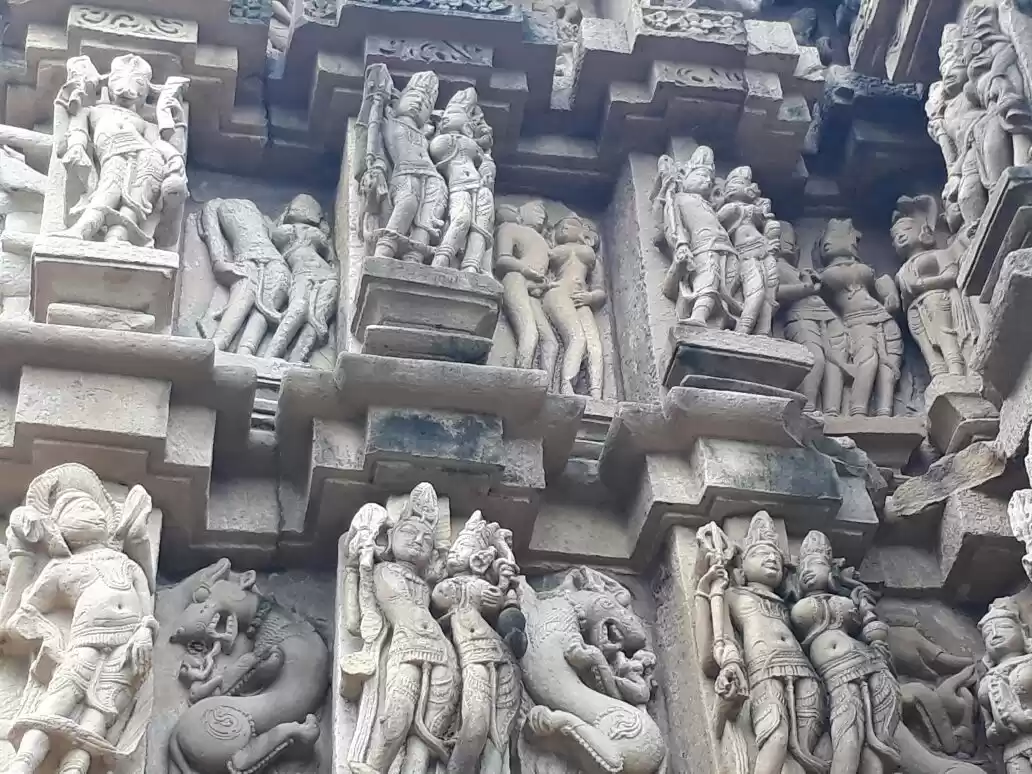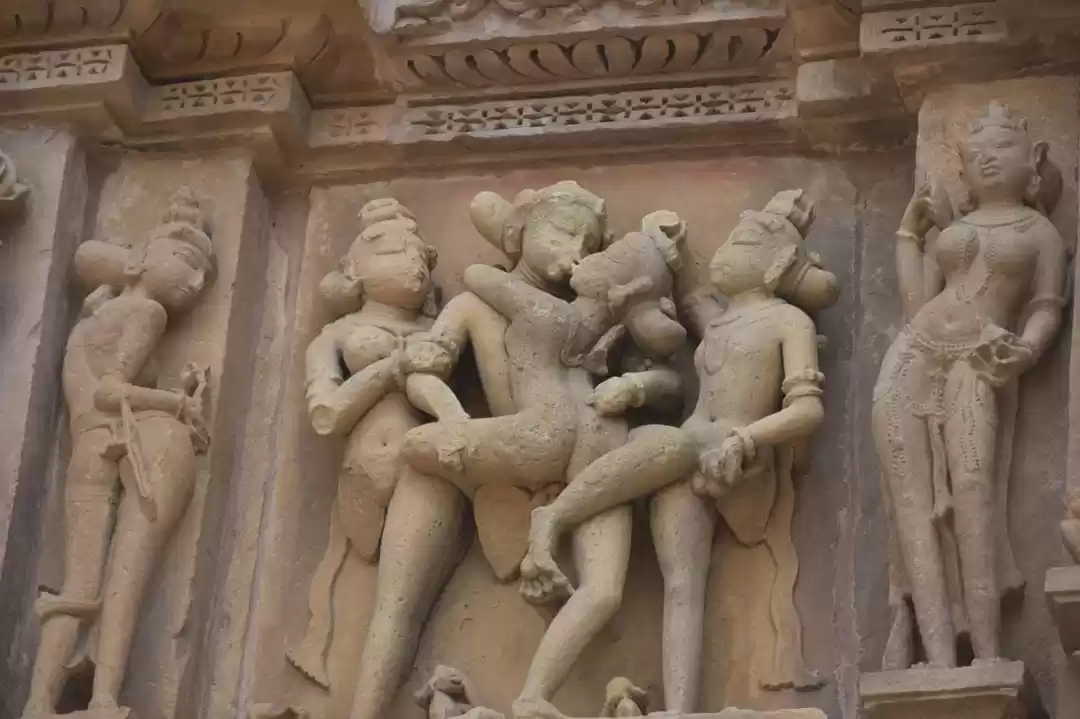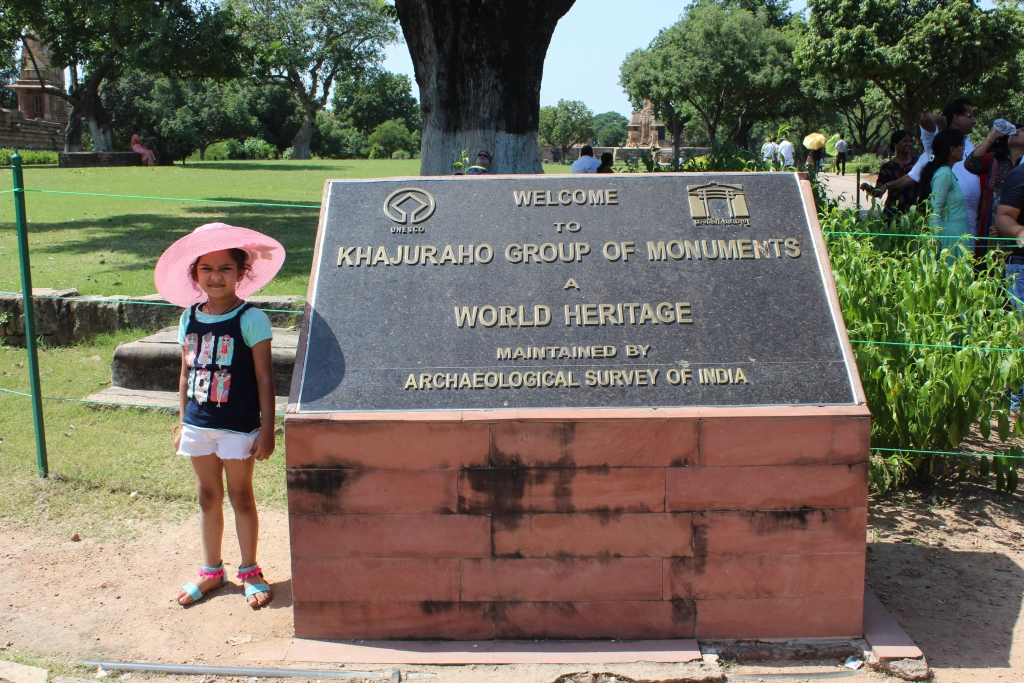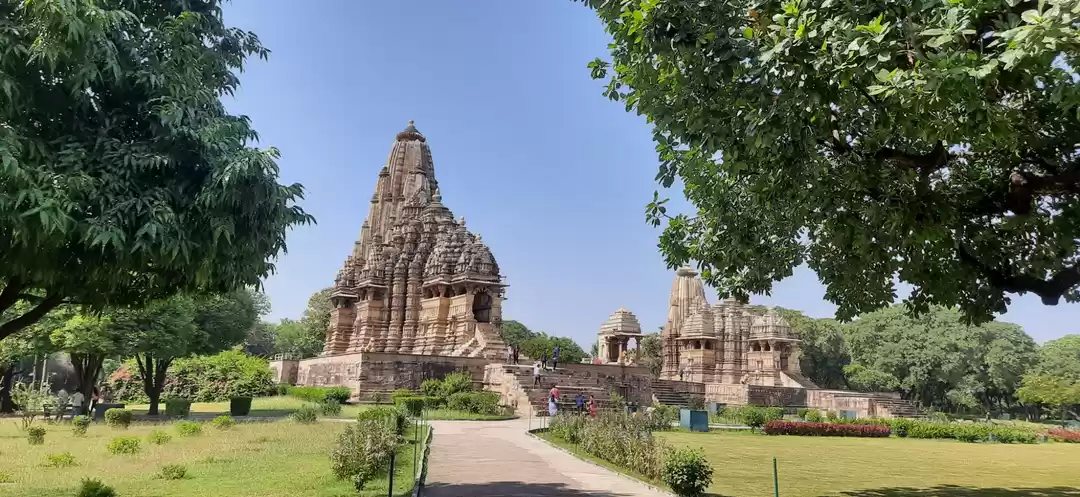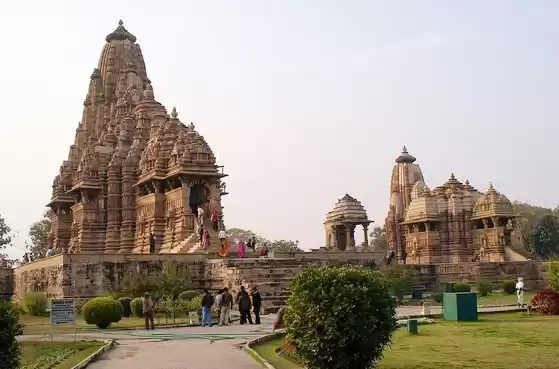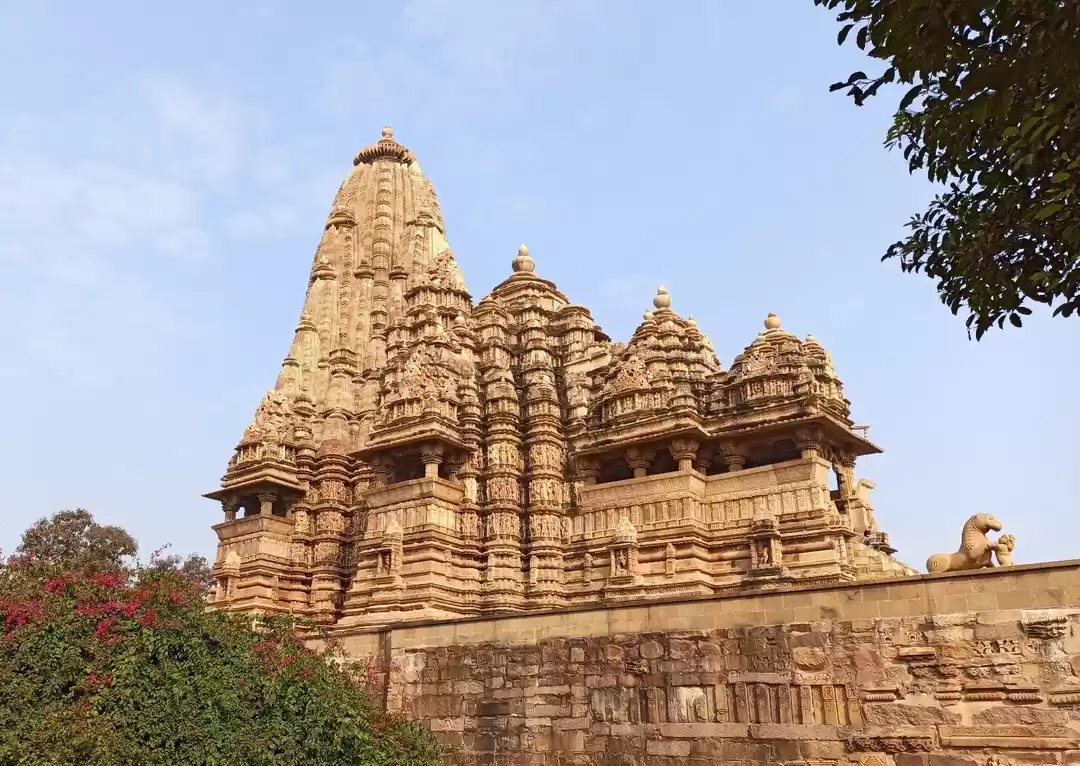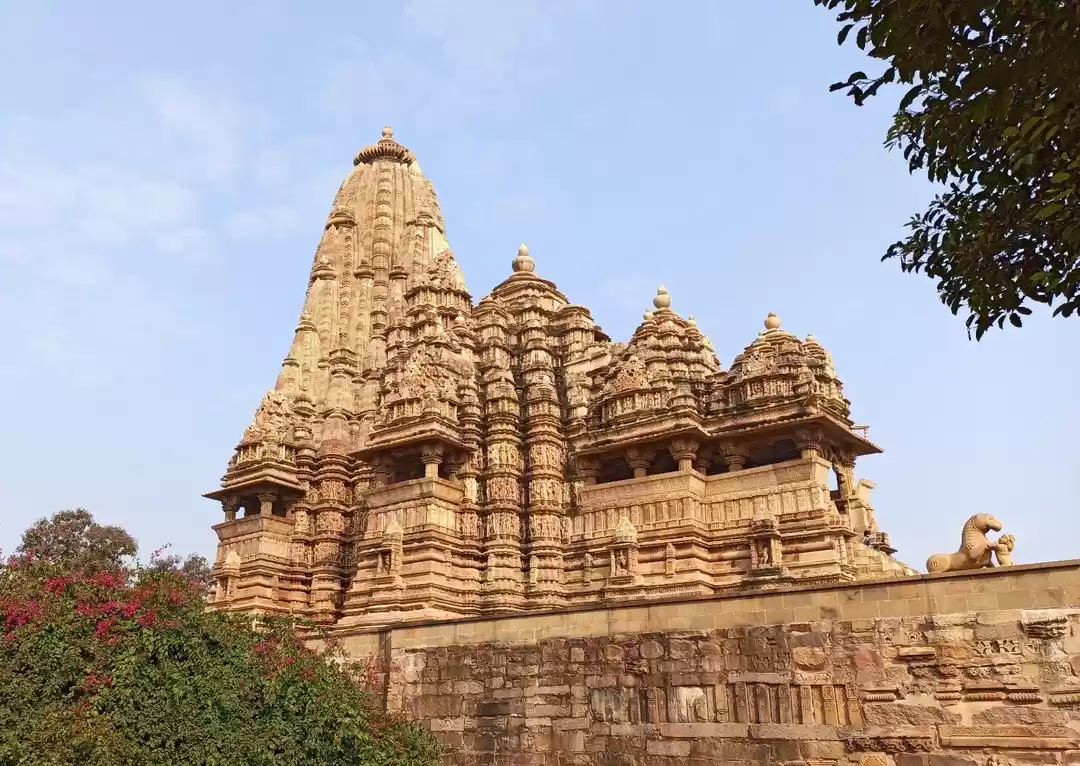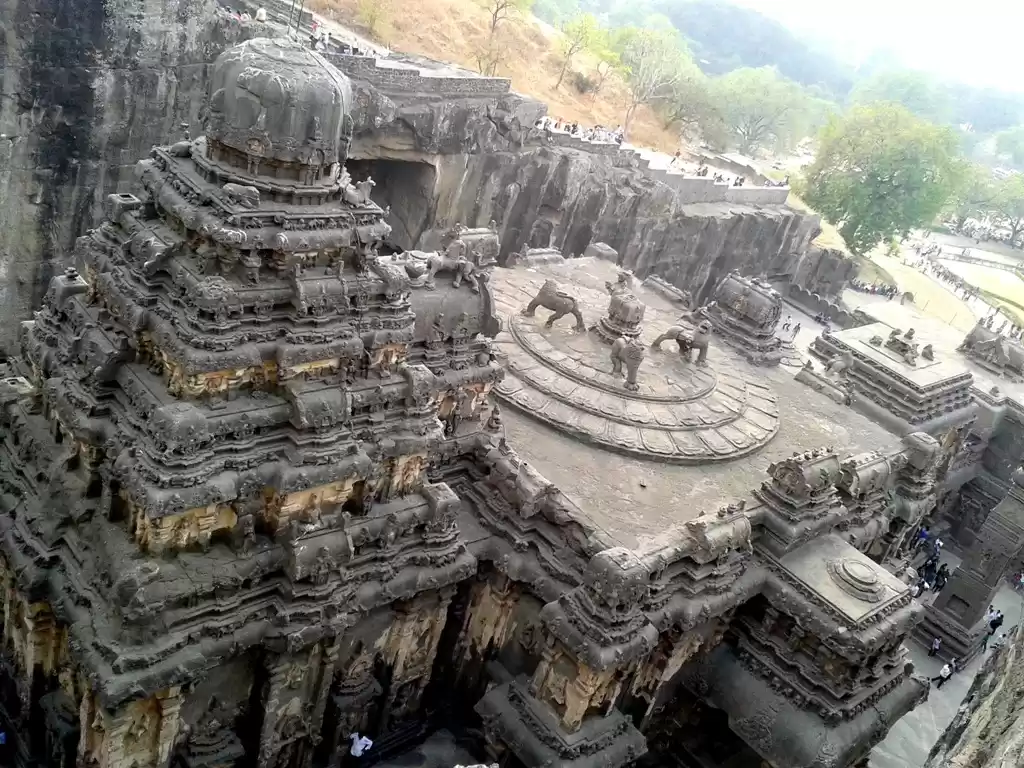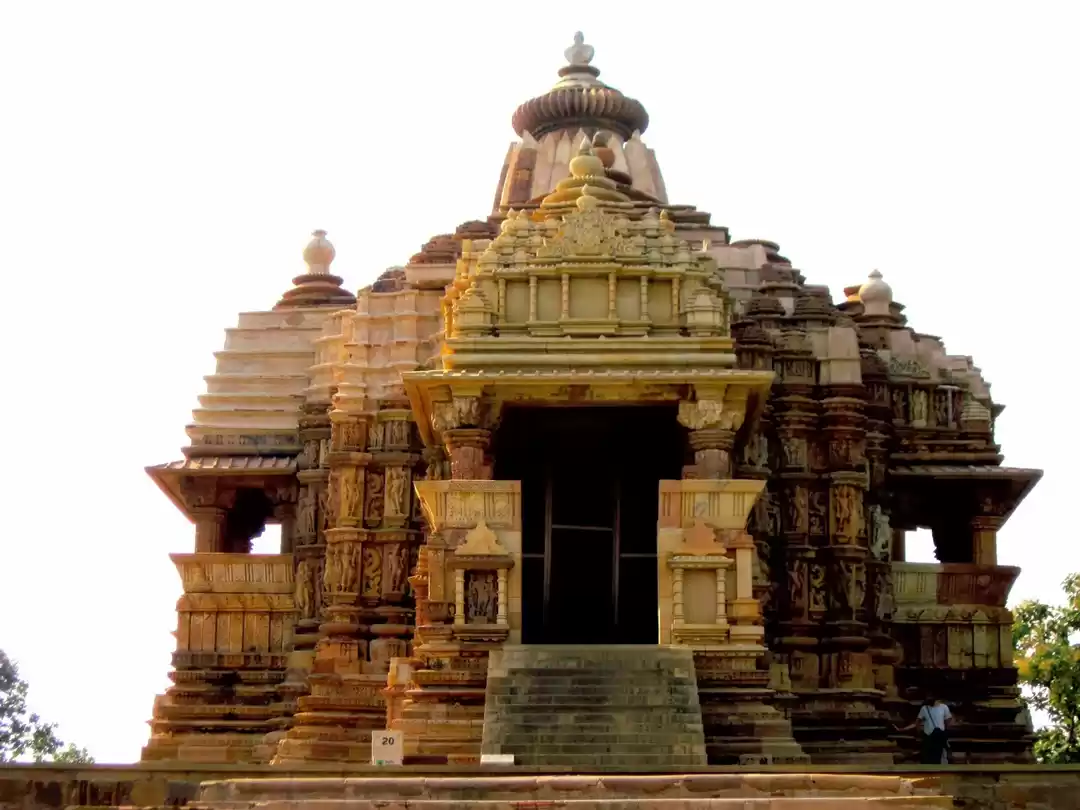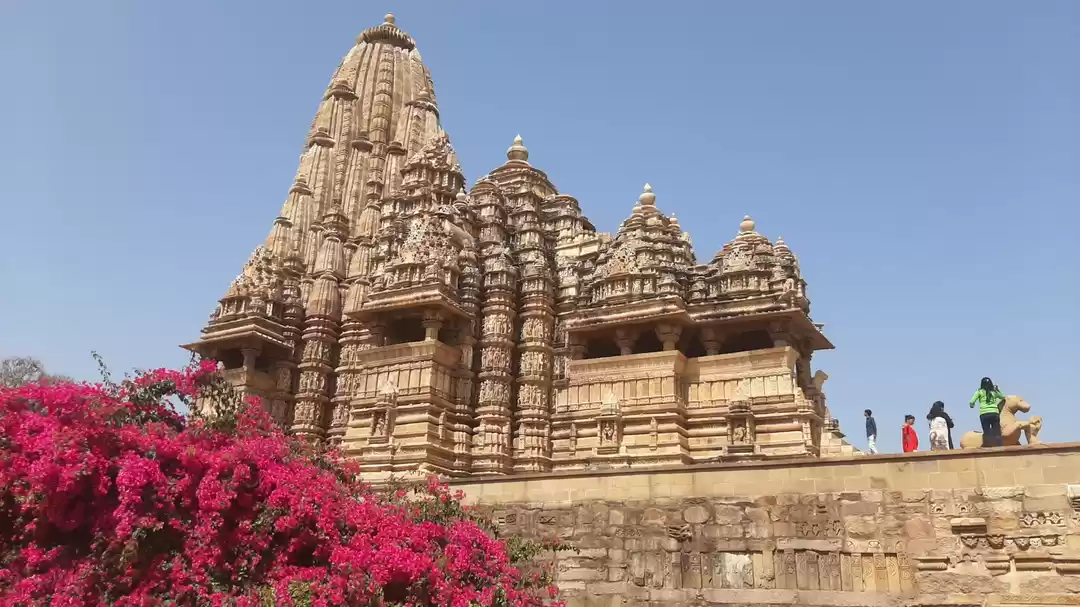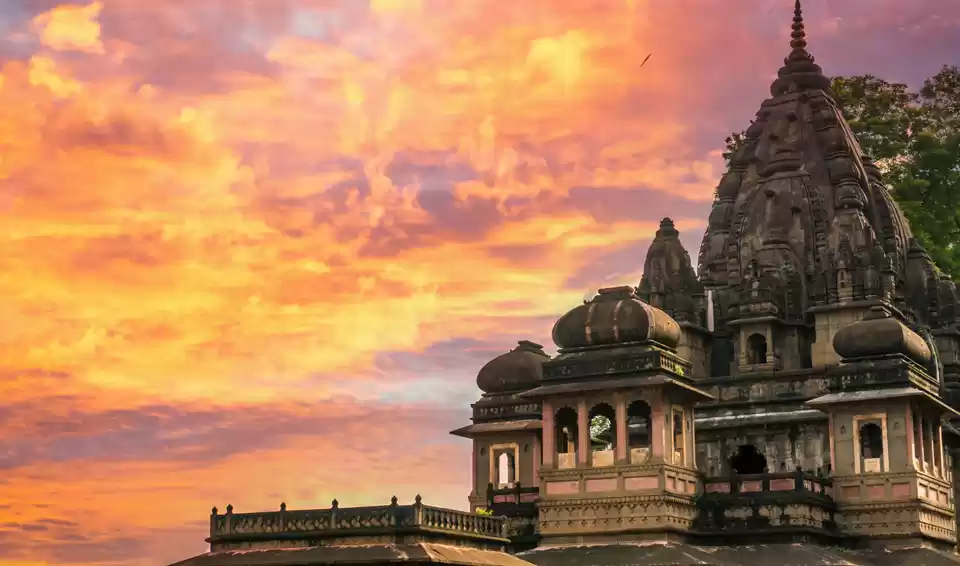The Khajuraho Group of Monuments is a group of Hindu temples in Chhatarpur district, Madhya Pradesh, India, about 175 kilometres (109 mi) southeast of Jhansi. They are a UNESCO World Heritage Site. The temples are famous for their nagara-style architectural symbolism and their erotic sculptures.
Most Khajuraho temples were built between 950 AD and 1050 AD by the Chandela dynasty. Historical records note that the Khajuraho temple site had 85 temples by the 12th century, spread over 20 square kilometers. Of these, only about 25 temples have survived attacks from mughal rulers, spread over six square kilometers. Of the surviving temples, the Kandariya Mahadeva Temple is decorated with a profusion of sculptures with intricate details, symbolism and expressiveness of ancient Indian art

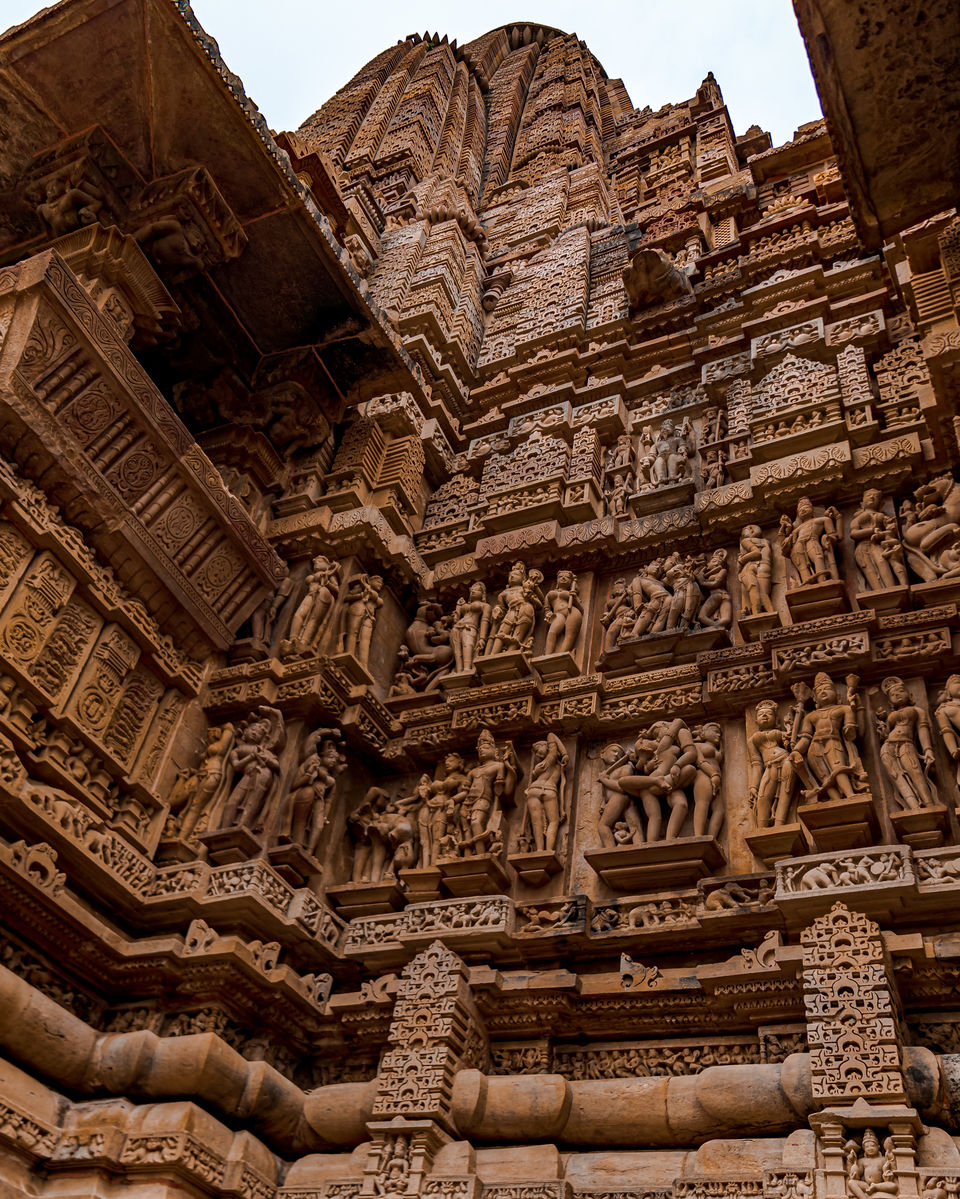
The Khajuraho temples feature a variety of artwork, of which 10% is sexual or erotic art outside and inside the temples. Some of the temples that have two layers of walls have small erotic carvings on the outside of the inner wall. Some scholars suggest these to be tantric sexual practices. Other scholars state that the erotic arts are part of the Hindu tradition of treating kama as an essential and proper part of human life, and its symbolic or explicit display is common in Hindu temples. James McConnachie, in his history of the Kamasutra, describes the sexual-themed Khajuraho sculptures as "the apogee of erotic art":
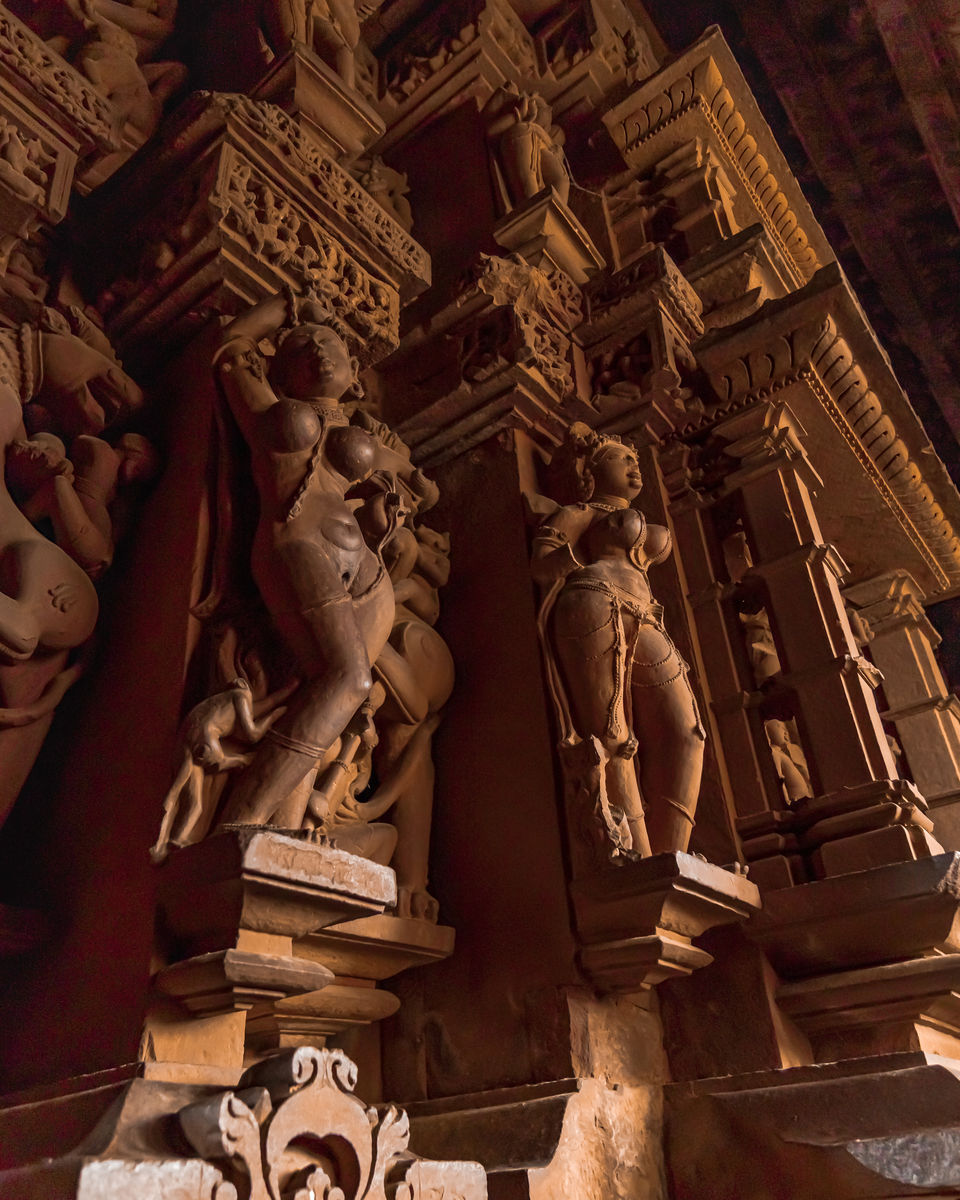
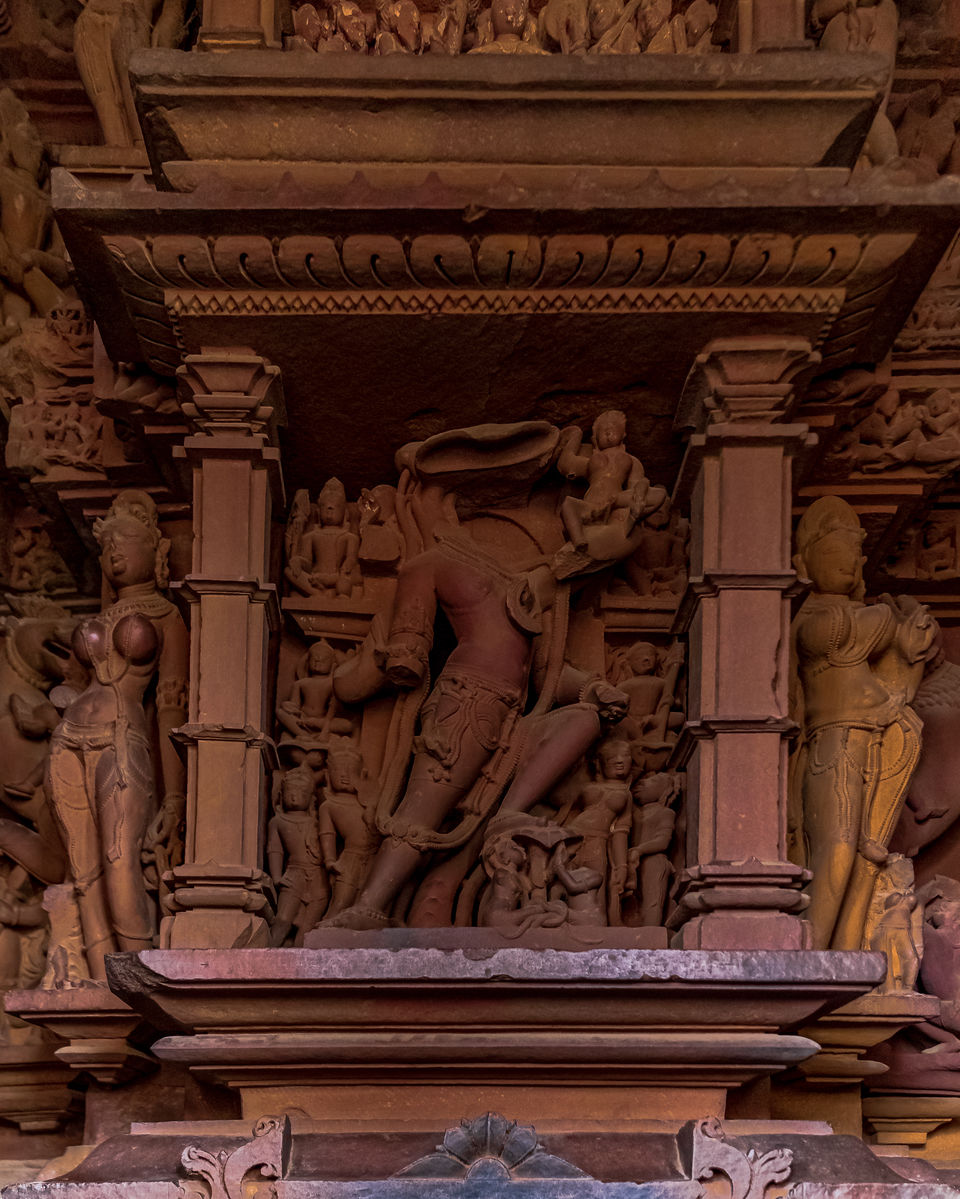
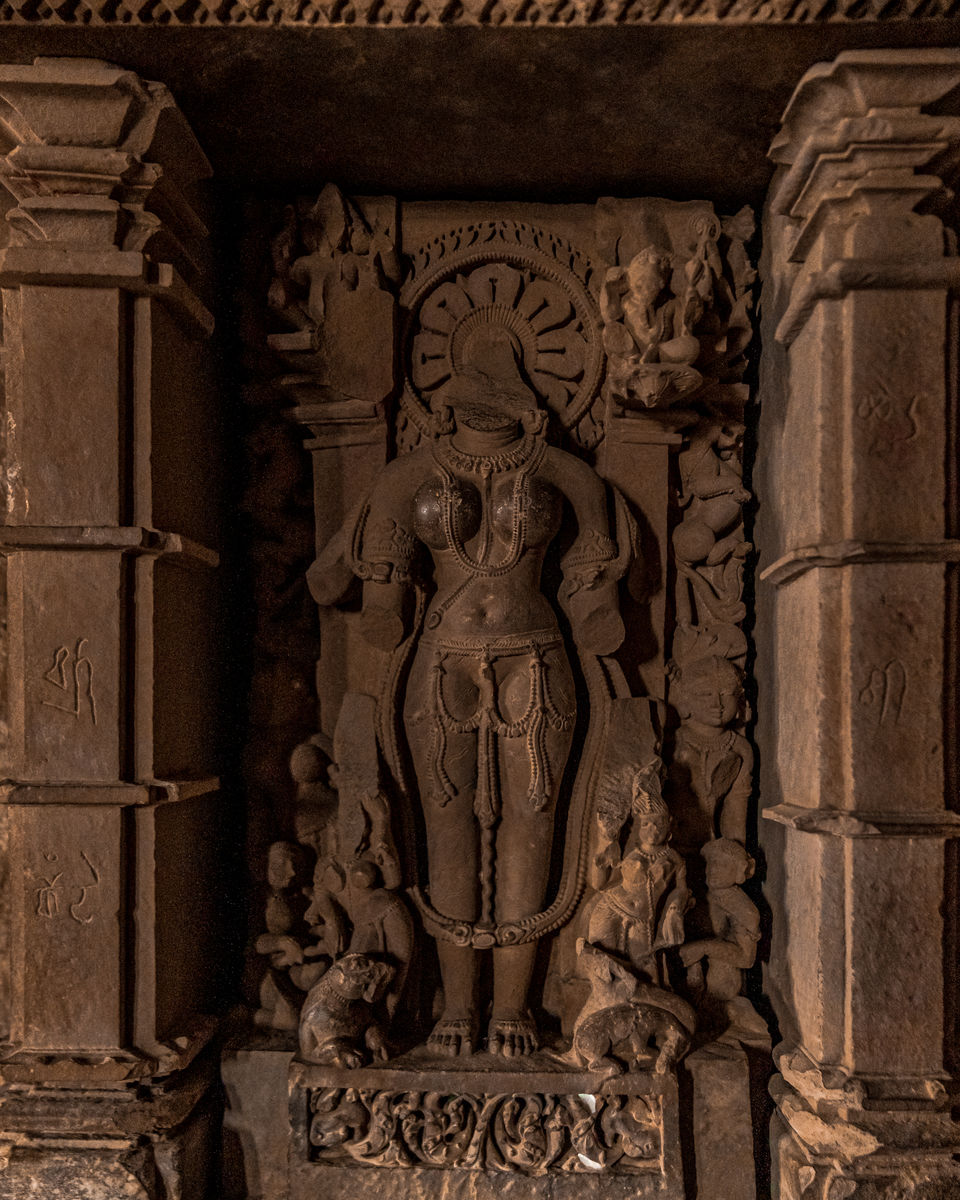
Khajuraho temples were in active use through the end of the 12th century. This changed in the 13th century; after the army of Delhi Sultanate, under the command of the Muslim Sultan Qutb-ud-din Aibak, attacked and seized the Chandela kingdom. because the Temples were made with stacked stones it was very difficult to demolish the whole structure so they only damaged the faces of the idols so that people will stop worshiping them.
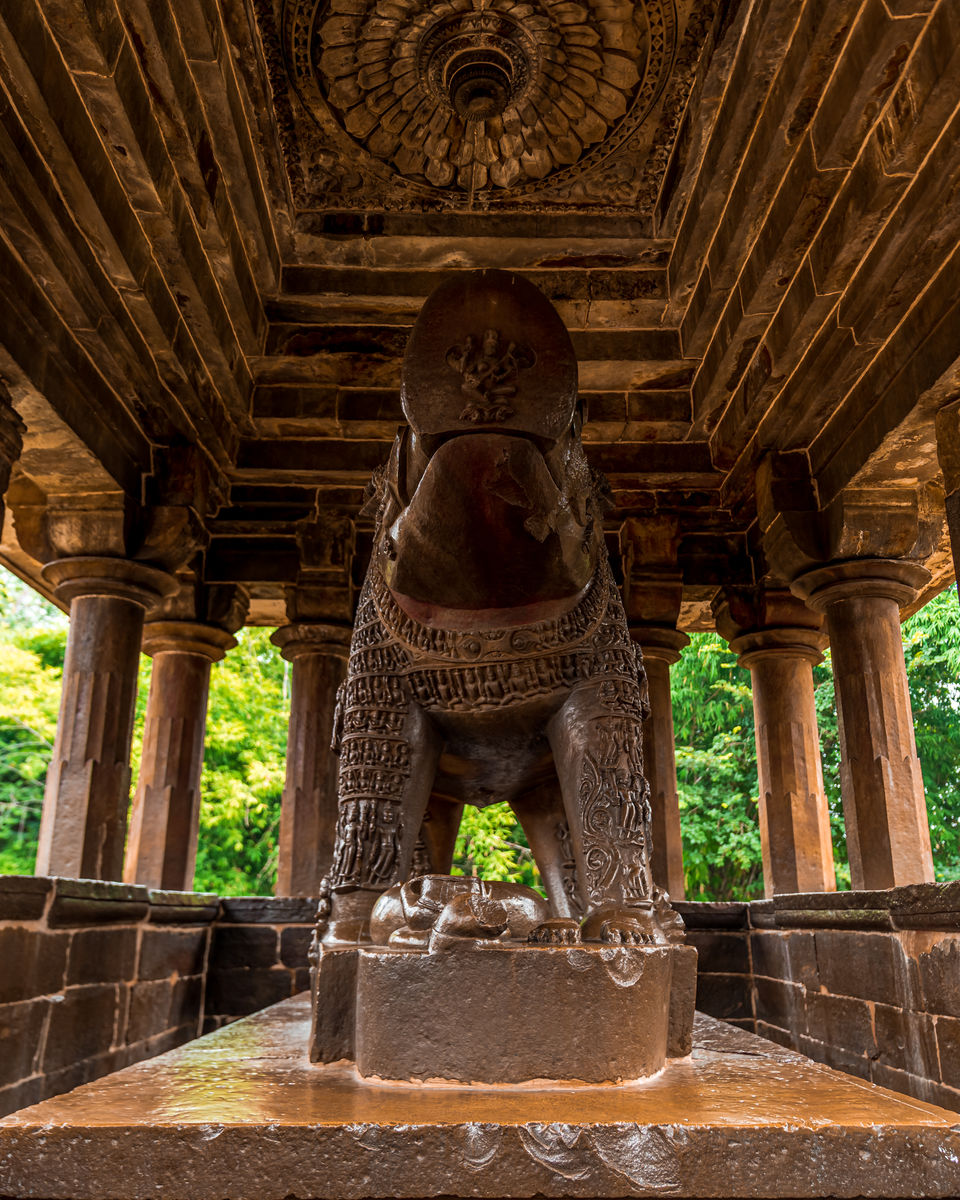
About a century later, Ibn Battuta, the Moroccan traveller in his memoirs about his stay in India from 1335 to 1342 AD, mentioned visiting Khajuraho temples, calling them "Kajarra" as follows: Near (Khajuraho) temples, which contain idols that have been mutilated by the Moslems, live a number of yogis whose matted locks have grown as long as their bodies. And on account of extreme asceticism they are all yellow in colour. Many Moslems attend these men in order to take lessons (yoga) from them. — Ibn Battuta, about 1335 AD, Riḥlat Ibn Baṭūṭah.

Khajuraho temples, almost all Hindu temple designs, follow a grid geometrical design called vastu-purusha-mandala. This design plan has three important components – Mandala means circle, Purusha is universal essence at the core of Hindu tradition, while Vastu means the dwelling structure.
The design lays out a Hindu temple in a symmetrical, concentrically layered, self-repeating structure around the core of the temple called garbhagriya, where the abstract principle Purusha and the primary deity of the temple dwell. The shikhara, or spire, of the temple rises above the garbhagriya. This symmetry and structure in design is derived from central beliefs, myths, cardinality and mathematical principles.

When I visited the place I had very little information about it. But seeing these enormous structures with your own eyes and realizing that this all is more than a 1000 years old amazed me. Filled with such rich cultural history These temples of Khajuraho have a lot to offer. Much more that what it is advertised as. At last I'll say it is one of the most underrated places in India and you should surely make a visit at least once.


